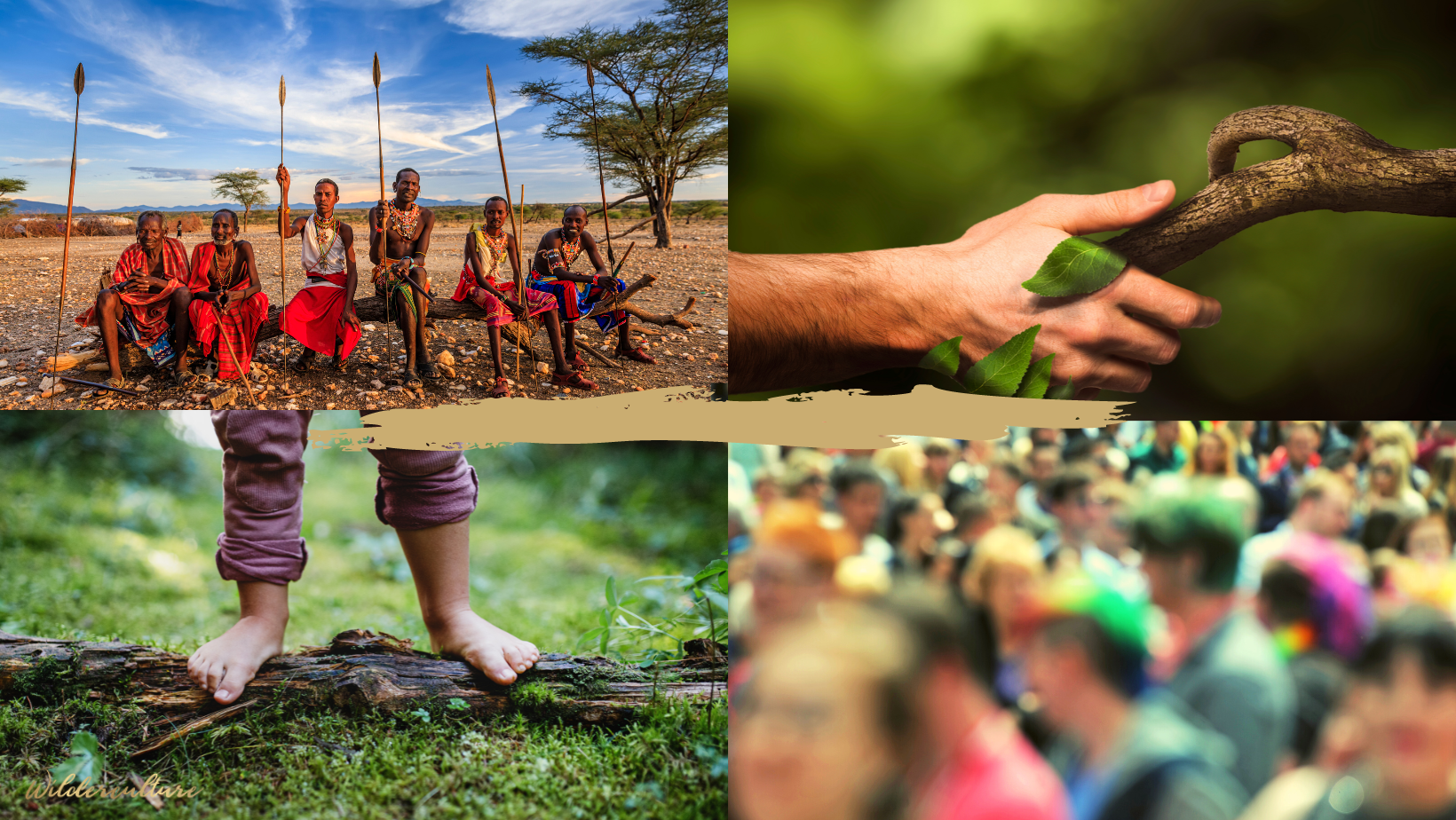
Humans: The Greatest Red Flag Species of All
Humans: The Greatest Red Flag Species of All
Part 4 in the series ‘Red Flag Species’
By Georgia Wingfield-Hayes
Humans are the biggest problem the planet has right? We destroy the habitats of our fellow beings here on earth. We cut down forests, we over fish, we pollute the waters and air… but is it humans per se that are the problem?
Surely the answer is to let nature rewild vast areas of land by taking ourselves out of the equation. Let nature do what she does best. This idea, as expounded by the likes of George Monbiot, seems an obvious solution, but it is an idea that has a dark past, and one that reinforces the notion that humans are separate from nature, that we have no place or role to play within the natural world.
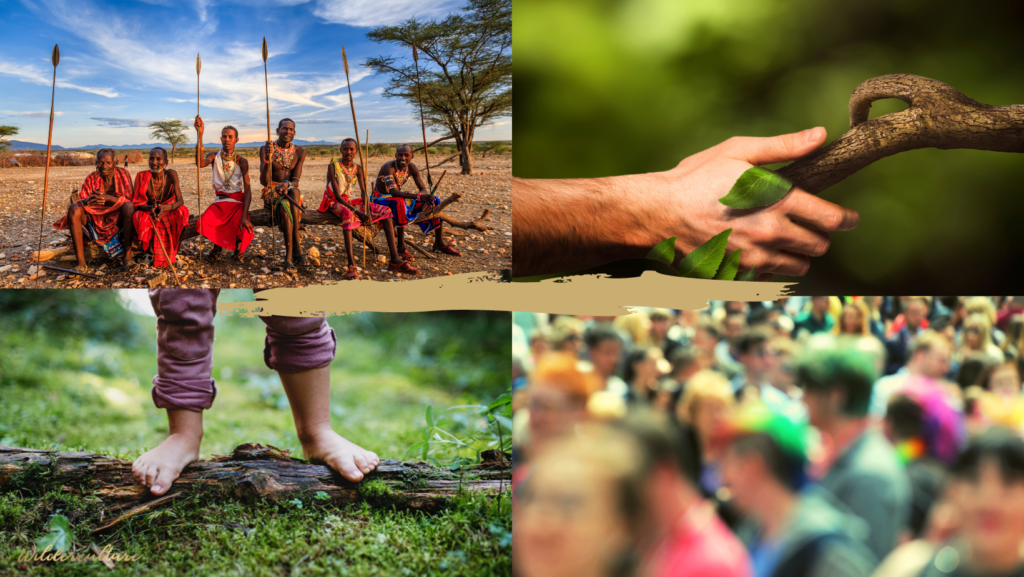
Philosophical Problem No.1 – The Myth of Wilderness
National parks are a wonderful invention because they have at least helped protect some large tracts of land from the full effect of globalisation. However in countries like Africa and North America, the quality of the ecosystem, and the quantity of biodiversity present, deteriorate when the parks were created.
Allan Savory, although he goes into this in very little detail in his writings, documents that when the national parks were created in Zimbabwe, that the native peoples were removed. It was then that devastating soil erosion began.
Through the reintroduction of wolves into Yellowstone National Park we are starting to understand the role of apex predators as a keystone species, as it alters the behaviour of the herbivores, thus allowing the landscape, especially the riparian woodlands to return and flourish.
Were the peoples of the national parks in Zimbabwe, who were hunters not herders and lived on the river banks not part of the ecosystem, just as the wolf is? Had that ecosystem and humans not evolved together?
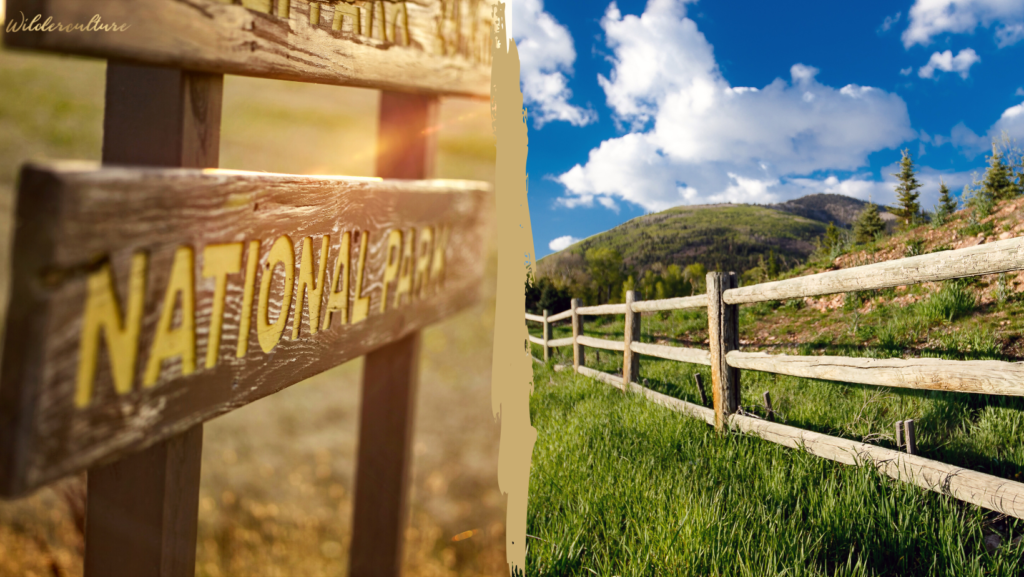
The European colonial mind created the romantic notion of wilderness. But if you ask indigenous peoples about this, as Mark Dowie has done extensively in his book Conservation Refugees, they have no word for wilderness. The following is an extract from Dowie’s essay – The Myth of Wilderness without Humans:
In Alaska, Patricia Cochran, a Yupik native scientist, told me:
“we have no word for ‘wilderness.’ What you call ‘wilderness’ we call our back yard. To us, none of Alaska is wilderness as defined by the 1964 Wilderness Act — a place without people. We are deeply insulted by that concept, as we are by the whole idea of ‘wilderness designation’ that too often excludes native Alaskans from ancestral lands.”
Yupiks also have no word for biodiversity. Its closest approximation means food. And the O’odham (Pima) word for wilderness is etymologically related to their terms for health, wholeness, and liveliness.
Dowie accounts how famous wilderness photographers like Ansel Adams, “assiduously avoided photographing any of the local Miwok who were rarely out of his sight as he worked Yosemite Valley.” These people were then moved off their native lands when the area was declared a national park.
Bruce Pascoe in his book Dark Emu – an excellent account of similar things occurring in Australia, tells how despite the first settlers witnessing the many and extensive agricultural practices of the Aboriginal peoples, that the implicit bias they carried, that these peoples were savages, was the notion that they were compelled to perpetuate. No less to justify the European land grab. So there was never any official acknowledgement that the Aboriginal peoples were not just hunters and gatherers but also farmers.
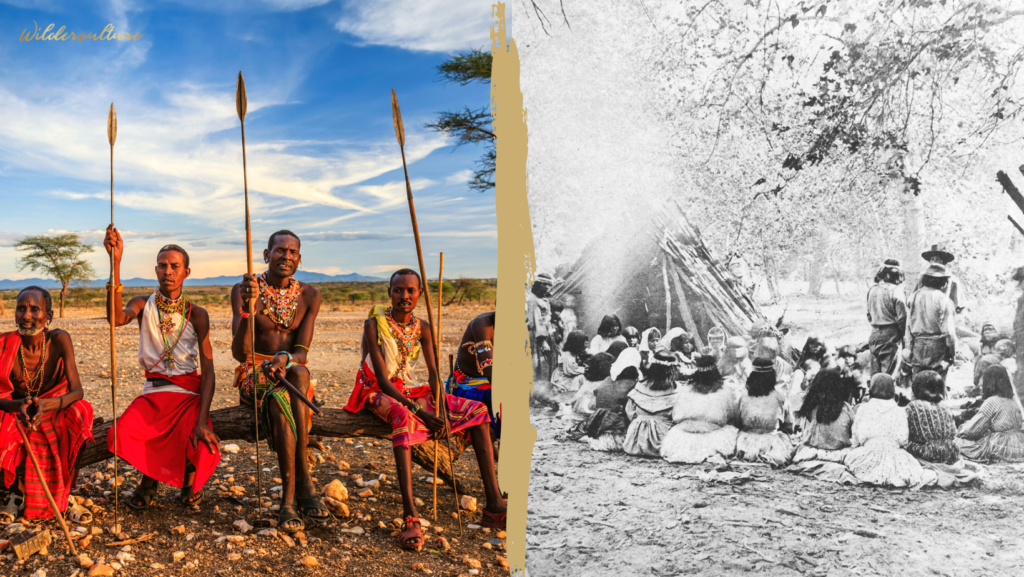
The synthesised perception of wilderness, as being free of humans, has become lodged in the western psyche, but it is a false notion. One that must be addressed, not only when looking at how we treat indigenous peoples today, but also how we perceive ourselves in relation to nature. Which brings me on to:
Philosophical Problem No.2 – The Mis-Perception of our Separateness from Nature.
We are living in a crisis of perception about our place in the world. All that we are made of, breathe, drink and eat, just like all other life on earth, is made up of molecules, cycling in the earth’s systems. Ashes to ashes, dust to dust. So why do we perceive ourselves as separate to nature? The word nature itself must come under scrutiny, because it perpetuates this notion of separation.
Creating wilderness, areas free of humans, is a symptom of this underlying mis-perception. On top of which climate change and biodiversity loss has us loathing ourselves which leaves us feeling ashamed. As any psychologist out there knows, this puts us into a state of denial, because the truth and the pain that comes with it, is too much to bear.
We could however forgive ourselves, allow ourselves freedom from the constraints of sciences to express love for our world, and acknowledge the Other, all Others, be they trees, cows or ants. We could allow ourselves to feel the connection that is already there with all those Others, a connection which has been denied us through two millennia of conditioning, first by religion, then by science.
Philosophical Problem No.3 – The Power Over Paradigm and the loss of Wildness.
Pat McCabe, a Dine (Navajo) activist speaks about our modern western culture in terms of the Power-Over Paradigm. That underlying our behaviour is the desire for success, being the best and more than anything, being in control. This is so normal to us, we find it hard to perceive the possibility of another way of being. We assume dominance, hierarchies and taking control as being natural.
However, the more we understand about natural systems, the more we see that there is a far greater story of cooperation and symbiosis at work in the background. But our lateness in acknowledging this, means that our attempts to preserve the natural world, such as the creation of national parks, tends to diminish complexity and vitality.
The philosopher Jack Turner in his chapter within – Place of the Wild: A Wildlands Anthology, speaks to this:
“By preserving things – acreage, species and natural processes – we believed we could preserve a quality. But collections of acreage, species and processes, however large or diverse, no more preserve wildness than large and diverse collections of sacred objects preserve the sacred.”
Turner claims that we “diminish autonomy and vitality, through our conservation ethics, but we are yet to acknowledge this.” I think he is right, except I would say that regenerative agriculture is perhaps the biggest step we have taken in the right direction in a very long time. Key to regenerative farming is to understand what it means to stop trying to control everything, to let go and trust in vital forces of the world.
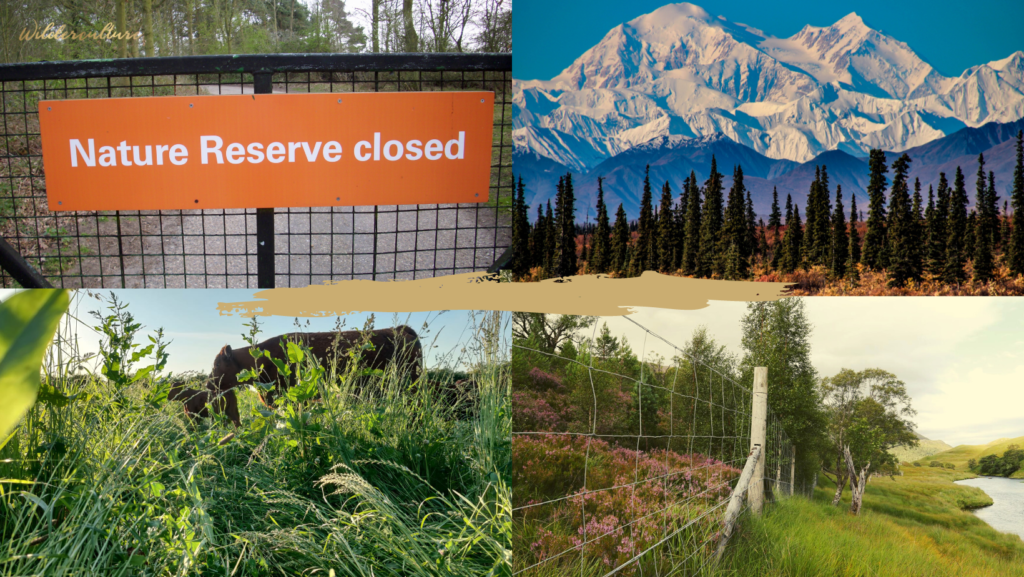
Turner makes two key distinctions: The first is the difference between wilderness and wildness. Wilderness is a construct of human perception, whereas wildness is the thing that has diminished everywhere, whether on lands we are trying to preserve or exploit. Wildness no less, has greatly diminished within us.
“We fight to protect ecosystems and species,” says Turner, “and accept their diminishing wildness. This wins the fight but loses the war.”
He goes on to make his second key distinction: The difference between control and influence. “Influence is not control and does not preclude autonomy.” he writes. “Autonomy is often confused with radical separation and complete independence. But the autonomy of systems – and, I would argue, human freedom – is strengthened by interconnectedness, influence, elaborate iteration, and feedback. Indeed, such self-organising systems create that possibility of change without which there is no freedom.“
In order to introduce this notion of wildness, we have to take seriously the issue of control. Most conservation is about control – meta-management.
Philosophical Problem No.4 – How do we Evolve into a Conscious Keystone Species that Respects the Autonomy of the Other and address our conditioned drive to control?
Change is the most difficult and yet most worthwhile pursuit in a human life. One of the most challenging aspects of teaching a regenerative approach to land management is teaching people to let go of control. We are all so entrained to see a problem and want to find a solution, rather than broadening our perspective to explore the possible underlying causes and act to influence the system to address those causes, allowing the system to rebalance and diversify.
Jack Turner’s ideas around the difference between control and influence are extremely useful here. To influence is to nudge things in the right direction so that the solution arises from the system. To control is to try and tackle symptoms of head on.
By learning to be a conscious keystone species in this way, we allow the autonomy and therefore wildness and vitality to return to our landscapes.
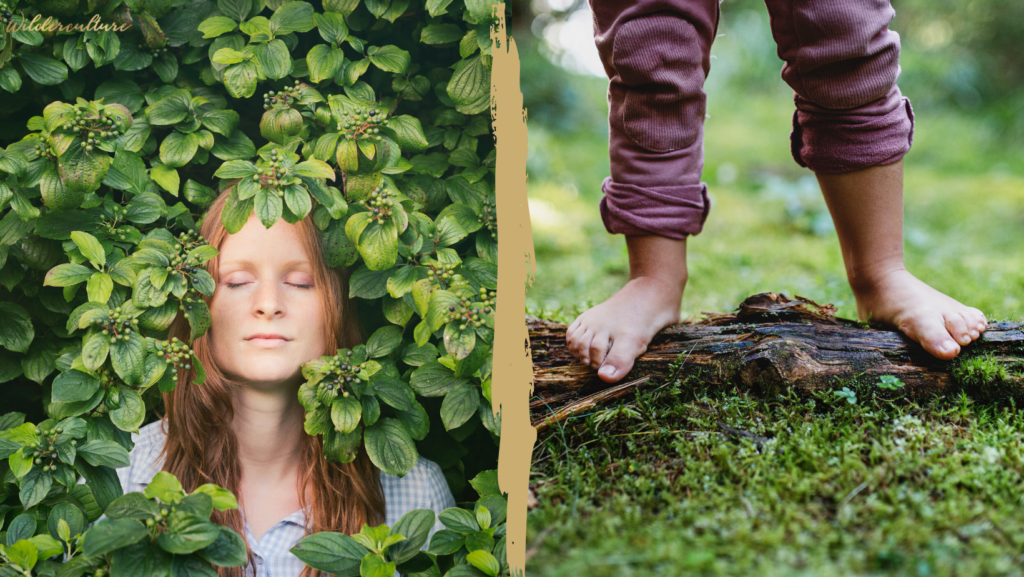
Nature doesn’t need to be left alone,
she needs us to be in relationship with her.
I live with heartbreak most days. Heart break for the way humans treat the natural world around us. That people can cut down trees without a thought, trees that I enjoyed seeing and being in the presence of on a daily walk. I watch lovely scrubby wild areas get ‘cleaned up’ to people’s neat and tidy agenda as I mourn the loss of habitat for nesting birds and hibernating hedgehogs. If our attempt to preserve the natural world continues to keep nature and humans separate, these symptoms of that separation will only get worse.
What we need is a radical reconnection. A radical re-relating. A slowing down to a pace where we can observe, understand, appreciate and be with the wild Others around us. To learn to respect their autonomy and help influence their well-being. And perhaps in the process we might start to rewild ourselves.
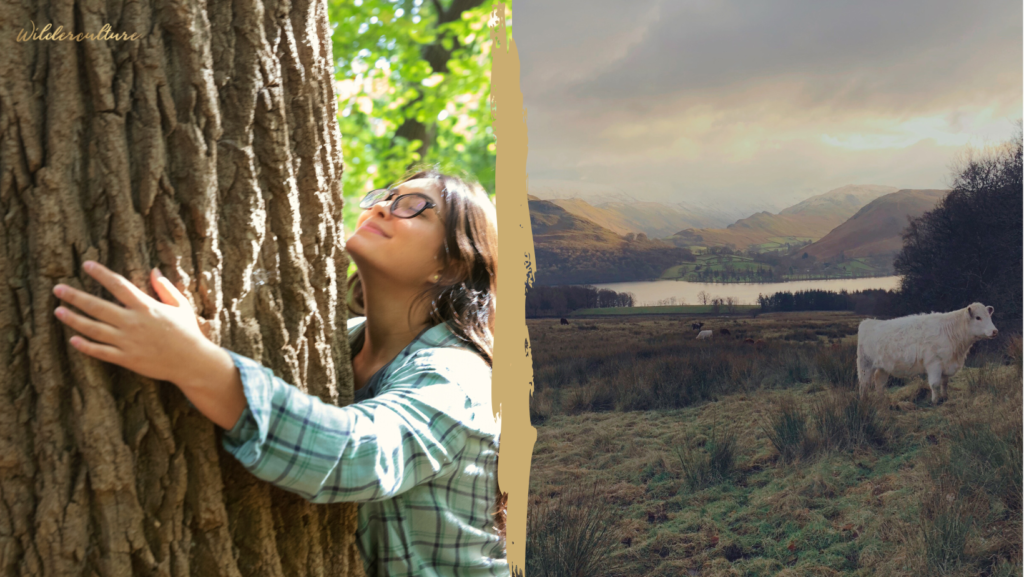
Our work in Wilderculture seeks to keep people on the land and deepen their relationship with it in this way. Regenerative land management is about learning to be this conscious keystone species. Learning how we can influence the land to accelerate positive change and hand back autonomy to not just the wild Others, but also to our livestock, allowing them to lead a far more natural life.
This is a follow on piece to three articles on Red Flag Species – species perceived as problems which we reframe as symptoms in order to help find the underlying causes and systemic imbalances.
Here are links to the other 3 articles:


No Comments